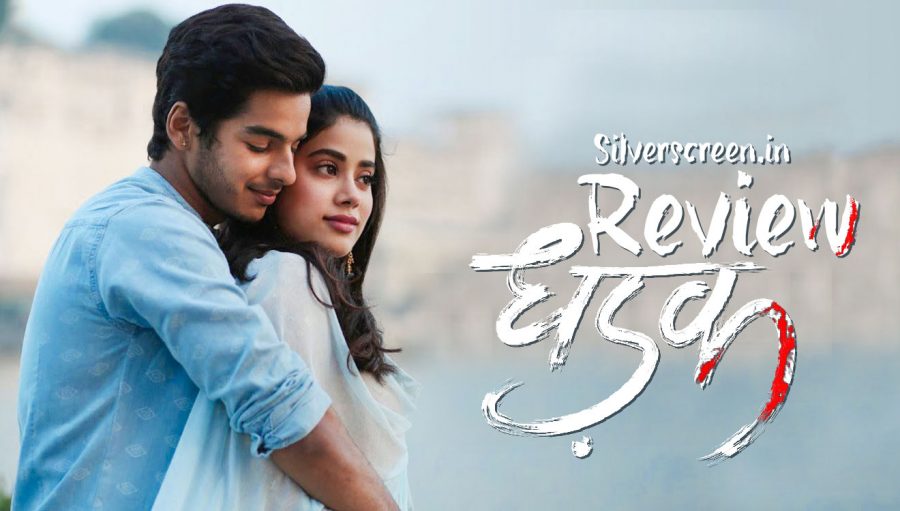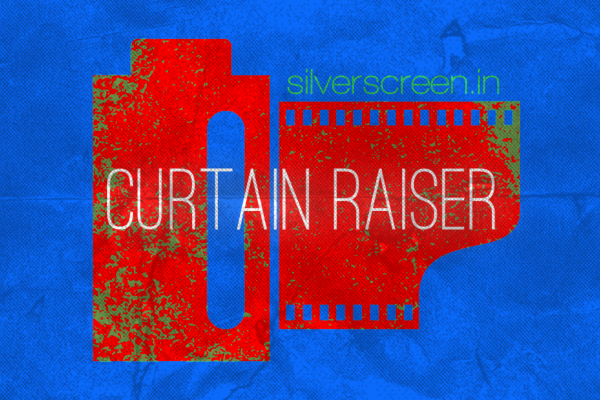Director: Shashank Khaitan
Cast: Janhvi Kapoor, Ishaan Khatter, Ashutosh Rana
Music: Ajay-Atul
The villain in Dhadak is an Amrish Puri-lookalike politician on whose face the camera focuses when his teenage daughter flees with her lover from another clan, who had been locked by his goons and the police. First, the man looks flabbergasted about her impromptu display of courage, then he returns to doing what he does the best – he seethes. Dhadak seems to say as though this man is the only problem that stands between the lovers; that if they can make peace with him, their life would be the fairy tale they had always dreamed about. While in Sairat, the Marathi blockbuster from where Dhadak borrows its plot from, the antagonist wasn’t an individual, but a societal system as old as the human civilization. There is a world of difference between the two films. Sairat, directed by Nagraj Manjule, drew inspiration from life, while Dhadak looks up to Bollywood.
If Dhadak, directed by Shashank Khaitan and produced by Karan Johar, lacks the charm that Sairat possessed, it is because the former doesn’t make the efforts to recreate it. Its interests lie elsewhere, perhaps in helping the star kids, who play the protagonists, with making a decent portfolio. The close-ups of the actors are plenty (he smiled – she smiled), ignoring the background details.
Dhadak is set in Udaipur, one of the most exotic small towns in India. The camera goes from photogenic palaces, terraces and streets to photogenic people. It stays away from the dust, dirt, sweat or anything that resembles real life. It isn’t about caste, although some of the characters mention it every now and then. It is about economic disparity (poor boy falls in love with rich girl) a trope that Bollywood potboilers have been using forever. We don’t get how different their milieus are. You see her visiting his house, and them holding hands in picture-perfect locations. They eat similar food, frequents to similar places, and are outraged by similar things. Also, both of them seem to take immense interest in ridiculing and body-shaming his friend, a dwarf who has no social filter. Sairat brought alive the socio-political nuances of the small-town so subtly that it crept into the audience’s understanding without them realizing it – like the almost-invisible moment where the boy’s mother hesitates a little when the girl comes to their house and asks for a glass of water. Dhadak unfolds in a one-note world.
Following the story-line of Sairat, Dhadak goes exploring the grey territory of post-infatuation where the lovers feel the pangs of real life, realize that being around each other and building a life together isn’t as dreamy as a fairy tale. But the film adds layers of gloss to it so that depression, poverty and bitterness don’t look like bad things at all. In one of the scenes, the girl is washing clothes on the floor of a common bathroom, and overriding the emotions of the moment, a bottle of Ujala finds a prominent place in the frame. It is that kind of a film.
The girl, Parthavi (Jahnvi Kapoor) belongs to a rich and influential household. She lives in a palace which also functions as an elite tourist resort. The boy, Madhu (Ishaan Khatter) is the only son to a middle-class couple who runs a boutique hotel. She is hot and rich. He is cute. Dhadak has little interest in exploring their characters any further. In Sairat, Archana (Rinku Rajguru) could intimidate an entire college not because she had the money or power, but because she had a stunning personality that commanded power. She rode a motorbike to college, and coolly stared at Parshya during class. She oozed swag. When Parshya fell head-over-heels in love with her, you could see why. Dhadak takes youngsters for granted, and assumes that their infatuation needs no detail. Wouldn’t two good-looking youngsters fall in love any way, it seems to ask.
Probably the best decision that Khaitan and Johar made was to bring in Sairat‘s music composers, Ajay-Atul. Their work, in spite of being beautifully melodious, sure feels different this time, thanks to the tone-deaf visualization. This is one of those films that assume that the characters never had a life before the point where the film begins. While Parthavi’s conversations indicate that a visit to the public tank is a part of her daily routine, Madhu’s reaction to the news of she coming to visit the tank goes way overboard. It is as though she has never been there before, and it’s a rare opportunity to catch a glimpse of her. An entire song is picturized on his excitement to be in her vicinity, and it comes across as folly. Parshya’s famous leap into the water turns into a choreographed nonsense in Dhadak.
Recommended
Everyone in the film’s cast looks like they were parachuted straight from Mumbai’s film studios to play unsophisticated small-towners. Jahnvi Kapoor has an aloofness that could be something irreparably a part of her on-screen persona. She has little screen-presence, although her stony expressions work in favor of her character in the latter half of the film. Khatter, to the contrary, is a thoroughly self-aware actor whose over-sized enthusiasm on screen might remind one of his brother, Shahid Kapoor, a mediocre actor who tries to make up for the lack of natural prowess by doing a stagy imitation of what is perceived as good acting. Khatter knows he is a star-material, and he plays to the gallery unabashedly, padding up the body language and expressions.
It is pointless to bash Bollywood for being caste-blind because it has never been interested in it in the first place. It is an industry that sells feminism and fairness products on the same page. Dhadak is, as a stand-alone-piece, a mediocre film that fiddles with a fantastic source material in hand. Sairat, a movie that spoke about caste and celebrated the crudeness of its characters and the small-town, had also minted money at the box-office. Unable to see that, Dhadak takes the beaten track of cliches and Bollywood essentials, wounding up on the same point where a hundred odd films such as Kaho Na Pyar Hai and Ram-Lila got stranded.
***
The Dhadak review is a Silverscreen original article. It was not paid for or commissioned by anyone associated with the movie. Silverscreen.in and its writers do not have any commercial relationship with movies that are reviewed on the site



